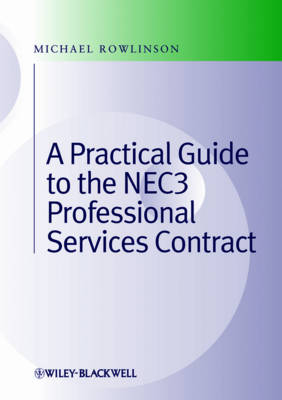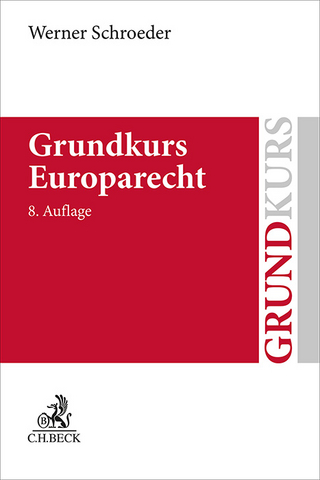
Practical Guide to the NEC3 Professional Services Contract
Wiley-Blackwell (Verlag)
978-0-470-67234-1 (ISBN)
- Titel z.Zt. nicht lieferbar
- Versandkostenfrei
- Auch auf Rechnung
- Artikel merken
Currently in its third edition, the NEC suite has become one of the UK’s leading families of standard forms of contract for major construction and civil engineering projects. Part of the NEC suite, the Professional Services Contract (PSC) was drafted with the same process-based approach and objectives, offering a standard contract for the appointment of consultants providing professional services in an engineering or construction project. Embodying best practice in terms of project management, the basic philosophy of the PSC differs from the principles and approach of other standard contracts used to appoint consultants. This book is a practical guide to the application of the PSC. Starting with a brief discussion of the background and philosophy behind the PSC, it identifies the roles and responsibilities of each of the named functions within the contract, explains the approaches required to achieve a successful working relationship between all parties, and examines all the procedures in the PSC. The book explains the links between the various sections of the contract to assist the reader with cross referencing, and covers all the variations created by the Main and Secondary Options. As a very practical guide it will aid users in the transition from their use and understanding of the other standard contracts to the collaborative project management-based approach of the PSC.
Written for anyone working in the construction and related industries using the PSC to procure or provide consultancy services in relation to a construction project, it will be of interest to the complete construction supply chain, particularly architects, structural engineers, services (M&E) engineers, civil engineers, quantity surveyors and interior designers, together with Contractors and Sub-Contractors who have a design liability and employ consultants to assist them. It will also be of interest to consultants and lawyers advising any of these parties, either in the preparation of contract documentation or the resolution of problem situations which may arise.
Michael Rowlinson MSc, DipArb, MRICS, FCIOB, FCIArb, FCICES, is a Director of Alway Associates (London) Ltd. He is an experienced construction professional, having qualified initially as a Chartered Quantity Surveyor and later as a Chartered Builder. After over 20 years with private practice and contractors Michael joined Alway Associates in 1998, specialising in Construction Contracts and Law. As part of his work Michael has lectured extensively for the Construction Study Centre and direct for his own clients, predominantly on the NEC suite of Contracts. He has written a number of articles on this suite of contracts which have been published in the Civil Engineering Surveyor and the NEC User Group’s Newsletter, as well as on the Alway Associates website. This is his second book about a contract from the NEC3 suite.
1 Introduction 1
1.1 General 1
1.2 Mechanics not law 2
1.3 A simple formula for understanding a contract 2
1.4 Mandatory or discretionary 3
1.5 Conditions precedent 4
1.6 Note on use of upper case in key words and phrases 4
2 Background to the NEC Family of Contracts 6
2.1 The background: First editions 6
2.2 The second edition 7
2.3 The third edition 8
2.4 Endorsement of NEC3 by the Office of Government Commerce 8
2.5 General philosophy: Aims and objectives 9
2.6 Flexibility 9
2.7 Clarity and simplicity 10
2.8 Stimulus to good management 11
2.9 Other characteristics 12
3 The Options: An Overview 13
3.1 General arrangement of the PSC 13
3.2 Other documents referred to 15
3.3 Contract Data 16
3.4 The published documents 16
3.5 Main options: General outline 17
4 'Spirit of Mutual Trust and Cooperation' 18
4.1 Introduction 18
4.2 Core clause 10.1 18
4.3 What does it mean? 20
4.4 Practical issues 21
5 The Cast of Characters 25
5.1 Introduction 25
5.2 The Employer 25
5.3 The Employer's Agent 27
5.4 The Consultant 29
5.5 The Adjudicator 29
5.6 Subconsultants 30
5.7 'Others' 30
5.8 CDM Coordinator 31
5.9 Principal Contractor 32
5.10 Practical issues 32
6 Communications, Early Warnings and other General Matters 34
6.1 Introduction 34
6.2 Communications: The clause 34
6.3 Communications: Practical issues 36
6.4 Early warnings: The clause 38
6.5 Early warnings: Practical issues 39
6.6 Other matters: The clauses 42
6.7 Other matters: Practical issues 44
7 The Parties' Main Responsibilities 46
7.1 Introduction 46
7.2 The Employer's obligations 46
7.3 The Consultant's obligations 47
7.4 Other matters 48
7.5 Practical issues 52
8 Subconsulting 55
8.1 Introduction 55
8.2 Definition of a Subconsultant 55
8.3 The core clauses 56
8.4 Provisions in the main options 56
8.5 Practical issues 57
8.6 Using the PSC as a Subcontract 58
9 Quality 59
9.1 Introduction 59
9.2 Quality management system 59
9.3 What is a Defect? 60
9.4 The Defects procedure 61
9.5 Uncorrected Defects 62
9.6 Practical issues 62
10 Rights to Material 65
10.1 Introduction 65
10.2 The core clauses 65
10.3 Secondary option X9 66
10.4 Practical issues 67
11 Indemnity, Insurance and Liability 68
11.1 Introduction 68
11.2 The core clauses 68
11.3 Secondary option X18: Limitation of liability 70
11.4 Practical issues 71
12 Time 74
12.1 Introduction 74
12.2 The programme: Contents 75
12.3 The programme: Submitting, accepting and revising 79
12.4 The programme: Practical issues 82
12.5 Starting and finishing 90
12.6 Other matters 93
12.7 Secondary options related to Time 95
12.8 Practical issues 97
13 Payment 100
13.1 Introduction 100
13.2 The payment process 100
13.3 Payments in multiple currencies 102
13.4 The amount due and the Price for Services Provided to Date 103
13.5 Supporting documents and records 107
13.6 The Consultant's share 111
13.7 The Consultant's share: Practical issues 112
13.8 Special provisions for the UK 114
13.9 Related secondary options 116
13.10 Practical issues 118
14 Compensation Events: Theory and Events 120
14.1 Introduction 120
14.2 The theory 120
14.3 The events 122
14.4 Practical issues 130
15 Compensation Events: Procedures 132
15.1 Introduction 132
15.2 Notification by the Employer 133
15.3 Notification by the Consultant and the Employer's reply 136
15.4 Other matters associated with notifying compensation events 139
15.5 Quotations: Substance 141
15.6 Quotations: Submission and reply 142
15.7 Assessments by the Employer 147
15.8 Implementing compensation events 148
15.9 Practical issues 149
16 Compensation Events: Assessment 154
16.1 Introduction 154
16.2 Changes to the Prices 155
16.3 Changes to the Completion Date and any Key Dates 159
16.4 Employer’s assumptions 162
16.5 Other related matters 163
16.6 Practical issues 165
17 Termination 168
17.1 Introduction 168
17.2 Reasons for termination 168
17.3 Secondary option X11: Termination by the Employer 171
17.4 Implementing termination 171
17.5 Procedures after termination 172
17.6 Payment on termination 173
17.7 Practical issues 174
18 Dispute Resolution 176
18.1 Introduction 176
18.2 Option W1 177
18.3 Option W2 180
18.4 Practical issues 185
19 Secondary Options 188
19.1 Introduction 188
19.2 X2: Changes in the law 188
19.3 X4: Parent company guarantee 189
19.4 X8: Collateral warranty agreements 189
19.5 X12: Partnering 190
19.6 X13: Performance bond 194
19.7 X20: Key Performance Indicators 195
19.8 Y(UK)3: The Contracts (Rights of Third Parties) Act 1999 196
19.9 Z: Additional conditions of contract 196
19.10 Practical issues 197
20 Completing the Contract Data 199
20.1 Introduction 199
20.2 Purpose and form of the Contract Data 199
20.3 Part One: Data for the core clauses 200
20.4 Part One: Data for the main option clauses 204
20.5 Part One: Data for the secondary option clauses 205
20.6 Part Two: Data for the core clauses 209
20.7 Part Two: Data for the optional statements 209
20.8 Practical issues 211
21 The Supporting Documents: Need and Content 214
21.1 Introduction 214
21.2 Scope 214
21.3 Practical issues 221
Bibliography 224
Further Reading 225
Appendix 1 Tables of Clause Numbers, Case Law and Statutes 226
Appendix 2 Tables of Employer’s, Consultant’s and Adjudicator's Actions 233
| Erscheint lt. Verlag | 23.7.2012 |
|---|---|
| Verlagsort | Hoboken |
| Sprache | englisch |
| Maße | 183 x 252 mm |
| Gewicht | 699 g |
| Themenwelt | Recht / Steuern ► EU / Internationales Recht |
| Technik ► Bauwesen | |
| ISBN-10 | 0-470-67234-X / 047067234X |
| ISBN-13 | 978-0-470-67234-1 / 9780470672341 |
| Zustand | Neuware |
| Haben Sie eine Frage zum Produkt? |
aus dem Bereich


